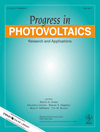
PROGRESS IN PHOTOVOLTAICS
Scope & Guideline
Empowering Research in Renewable Energy Technologies
Introduction
Aims and Scopes
- Photovoltaic Materials Science:
Research exploring the physical and chemical properties of materials used in solar cells, including silicon, perovskite, and thin-film technologies. This involves studies on material synthesis, defect characterization, and improvements in efficiency. - Device Engineering and Efficiency Optimization:
Focus on the design, fabrication, and optimization of photovoltaic devices. This includes advancements in cell architectures, interconnections, and the implementation of new technologies like bifacial and tandem solar cells. - Reliability and Degradation Studies:
Investigations into the long-term performance, reliability, and degradation mechanisms of photovoltaic modules, aiming to enhance their lifespan and efficiency under various environmental conditions. - Sustainability and Lifecycle Analysis:
Research dedicated to assessing the environmental impact and sustainability of photovoltaic technologies, including lifecycle assessments, material sourcing, and recycling technologies. - System Performance and Integration:
Analysis of the performance of photovoltaic systems in real-world applications. Studies focus on energy yield predictions, performance loss evaluations, and the integration of solar technologies into buildings and vehicles.
Trending and Emerging
- Perovskite Solar Cells and Tandem Technologies:
Research on perovskite solar cells and their integration with silicon cells in tandem configurations is rapidly increasing, driven by their potential for high efficiency and low production costs. - Bifacial PV Technologies:
The interest in bifacial solar modules is surging as they offer improved energy yield by capturing sunlight from both sides, making them a key focus area in recent studies. - Advanced Characterization Techniques:
Emerging methodologies for characterizing photovoltaic materials and devices, such as machine learning and advanced imaging techniques, are becoming increasingly prevalent in research. - Sustainable Practices and Circular Economy:
There is a growing emphasis on sustainability within the photovoltaic sector, focusing on recycling, material sustainability, and life cycle assessments to support a circular economy. - Integration with Electric Mobility and Smart Grids:
Research is increasingly exploring the integration of photovoltaic systems with electric vehicles and smart grid technologies, reflecting a broader trend towards sustainable energy solutions.
Declining or Waning
- Conventional Single-Junction Solar Cells:
Research on traditional single-junction solar cells has declined as the focus shifts towards more advanced technologies such as tandem and bifacial solar cells, which promise higher efficiencies. - Organic Photovoltaic Technologies:
Interest in organic photovoltaics has decreased, possibly due to challenges related to stability and efficiency compared to inorganic alternatives, leading to a reduced number of publications in this area. - Dye-Sensitized Solar Cells (DSSCs):
Research on DSSCs has become less frequent as the industry and academia increasingly prioritize other technologies that offer better scalability and commercial viability. - Utility-Scale PV Systems without Integrated Solutions:
There is a noticeable decline in publications focusing solely on utility-scale systems without integration solutions, as more studies now emphasize the integration of PV with energy storage and smart grid technologies.
Similar Journals
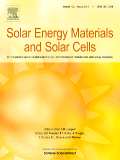
SOLAR ENERGY MATERIALS AND SOLAR CELLS
Leading the Charge in Solar Energy ResearchSOLAR ENERGY MATERIALS AND SOLAR CELLS is a distinguished academic journal published by Elsevier, based in the Netherlands, focusing on innovative research in the fields of materials science and renewable energy. With a substantial history dating back to 1970, the journal has evolved into a premier platform for disseminating advanced studies related to solar energy technologies, including the development and optimization of solar cells and materials. Recognized for its high impact, the journal maintains a Q1 ranking across multiple relevant categories such as Electronic, Optical and Magnetic Materials, Renewable Energy, Sustainability and the Environment, and Surfaces, Coatings, and Films. It ranks impressively within the top tiers of Scopus, showcasing its influence and relevance in the scientific community. Although it does not offer open access, the journal remains a crucial resource for researchers, professionals, and students aiming to contribute to the advancement of sustainable energy technologies and materials innovation.
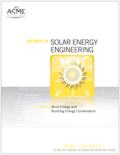
JOURNAL OF SOLAR ENERGY ENGINEERING-TRANSACTIONS OF THE ASME
Leading the Charge in Solar Energy Research and Development.JOURNAL OF SOLAR ENERGY ENGINEERING-TRANSACTIONS OF THE ASME is a premier publication dedicated to advancing the field of solar energy engineering, under the auspices of the prestigious American Society of Mechanical Engineers (ASME). With the ISSN 0199-6231 and E-ISSN 1528-8986, this journal has established itself as a critical resource for researchers and professionals alike, particularly in the areas of energy engineering and renewable technology. Currently enjoying an impact factor that places it in the Q2 category for Energy Engineering and Power Technology and Q3 for Renewable Energy, Sustainability, and the Environment, this journal effectively bridges impactful research and practical application. Spanning contributions from 1980 to 2025, the journal emphasizes empirical studies, innovative methodologies, and sustainable solutions that resonate with the growing global demand for renewable energy. The journal’s commitment to quality is reflected in its competitive Scopus rankings: 97th out of 272 in Energy Engineering and 124th out of 270 in Renewable Energy. Although not an Open Access journal, it remains a vital forum for disseminating research that shapes our energy future. Located in New York, this journal serves as a cornerstone for those in academia and industry to stay abreast of the latest advancements in solar energy technologies and their application in sustainable development.
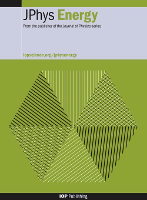
Journal of Physics-Energy
Fostering Global Collaboration in Physics and Energy InnovationsJournal of Physics-Energy, published by IOP Publishing Ltd, is a leading Open Access journal that serves as a dynamic platform for the dissemination of high-quality research within the interdisciplinary realms of energy, materials science, and materials chemistry. Since its inception in 2019, the journal has gained remarkable recognition, achieving a prestigious Q1 ranking in multiple categories in 2023, highlighting its impact within these rapidly evolving fields. With its Scopus Ranks, placing it in the top 10% of journals for General Energy and within the top 20% for Materials Science disciplines, it reflects the commitment to excellence in research and innovation. Conveniently based in the United Kingdom, the journal is designed to facilitate collaboration and knowledge exchange among researchers, professionals, and students dedicated to advancing the understanding of energy technologies and materials science. The open access model ensures that cutting-edge research is freely available, promoting global accessibility and engagement with the latest scientific advancements.
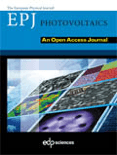
EPJ Photovoltaics
Exploring the cutting-edge of photovoltaic advancements.EPJ Photovoltaics, published by EDP Sciences S.A., is a distinguished open-access journal dedicated to advancing the field of photovoltaic research and technology. Established in 2011, and operating from France, the journal serves as a vital platform for researchers, professionals, and students interested in the innovative possibilities of solar energy conversion. With a broad scope encompassing condensed matter physics, electrical and electronic engineering, and renewable energy, EPJ Photovoltaics boasts a commendable Q2 ranking in key categories as of 2023, showcasing its relevance and impact in the scientific community. Researchers will find an opportunity to disseminate their findings effectively, as the journal offers rapid publication options that align with the fast-paced evolution of the field. This publication not only contributes to academic discourse but also plays a crucial role in addressing global energy challenges, making it an essential resource for anyone invested in the future of sustainable energy technologies.
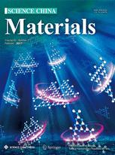
Science China-Materials
Innovating Tomorrow's Materials, Today.Science China-Materials is an esteemed peer-reviewed journal dedicated to advancing the field of materials science, published by SCIENCE PRESS. With a strong focus on innovative research and applications, this journal provides an essential platform for disseminating groundbreaking findings in materials development, characterization, and engineering. Since its inception, Science China-Materials has achieved an impressive Q1 ranking in the Materials Science (miscellaneous) category, reflecting its commitment to quality and the impact of its publications, as indicated by its 86th percentile ranking in Scopus. The journal is set to converge its contributions from 2016 to 2024, making it a vital resource for researchers and professionals interested in the latest advancements and trends in materials science. As an open access publication, it ensures that knowledge is freely available to a global audience, promoting collaboration and innovation across disciplines. The journal is headquartered in Beijing, China, and continues to attract high-quality submissions from leading experts in the field.
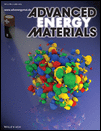
Advanced Energy Materials
Catalyzing Change through Advanced Material ScienceAdvanced Energy Materials is a leading academic journal published by WILEY-V C H VERLAG GMBH, focusing on the rapidly evolving fields of materials science and renewable energy technologies. With an impressive impact factor and recognition as a top-tier journal, it ranks within the Q1 category in both Materials Science (miscellaneous) and Renewable Energy, Sustainability and the Environment as of 2023. Spanning from 2011 to 2024, the journal serves as an essential platform for researchers, professionals, and students eager to explore groundbreaking advancements in energy materials, fostering innovative solutions to global sustainability challenges. The journal's authoritative content is supported by rigorous peer review, ensuring high-quality research contributes to the academic community and beyond. Located in Weinheim, Germany, Advanced Energy Materials stands at the forefront of scientific inquiry, making it an invaluable resource for those invested in the future of energy and materials science.
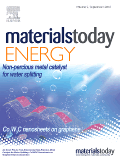
Materials Today Energy
Pioneering Research at the Intersection of Materials and EnergyMaterials Today Energy is a premier journal published by Elsevier, focusing on the interdisciplinary field of energy materials. With an ISSN of 2468-6069, the journal is renowned for its impactful research as evidenced by its impressive Q1 quartile rankings in multiple categories including Energy Engineering and Power Technology, Fuel Technology, and Renewable Energy. It stands out with strong Scopus rankings, highlighting its significance in the respective research communities, such as being ranked 3rd in Nuclear Energy and Engineering. Established from 2016 to 2024, the journal aims to provide a platform for innovative research that addresses the global demands for sustainable energy solutions. Although it is not open access, Materials Today Energy is accessible to a broad audience, encouraging collaborations among researchers, professionals, and students in the pursuit of advancing materials science and energy technologies. This makes it an essential resource for those looking to remain at the forefront of discoveries that shape the future of energy.

Advances in Energy Research
Empowering Sustainable Solutions for Tomorrow's Energy Landscape.Advances in Energy Research is a prominent journal dedicated to the exploration and advancement of energy technologies and sustainable practices. Published by TECHNO-PRESS, this journal serves as a vital platform for researchers, professionals, and students in the energy field, featuring innovative studies and reviews that contribute to the body of knowledge surrounding energy efficiency, renewable resources, and the integration of new technologies. The journal holds a significant position in energy research and aims to facilitate the dissemination of groundbreaking findings and ideas that are pivotal for the transition toward a more sustainable energy future. Located in South Korea, with an ISSN of 2287-6316, it embraces an open access philosophy that ensures widespread availability of its content, further enhancing its impact in the academic community.

Ingenius-Revista de Ciencia y Tecnologia
Elevating research quality for a sustainable technological future.Ingenius-Revista de Ciencia y Tecnología is a premier academic journal published by the UNIV POLITECNICA SALESIANA ECUADOR, dedicated to the dissemination of high-quality research across various engineering and technological fields. Established in 2011 as an Open Access platform, this journal has fostered knowledge sharing and collaboration among scholars and industry professionals. With a scope that encompasses diverse disciplines including Aerospace, Automotive, Biomedical, Civil, and Computational Engineering, Ingenius serves as a vital resource for researchers aiming to contribute to the advancement of technology and engineering solutions. Although currently placed in the Q4 category across multiple engineering disciplines based on the 2023 rankings, the journal is steadfast in its mission to elevate the quality of published work and enhance its visibility in global research databases. Given its commitment to open access and scholarly dissemination, Ingenius plays a significant role in promoting innovative ideas and fostering educational growth within the engineering community.

eScience
Unlocking the Future of Materials and Renewable EnergyeScience, published by KEAI PUBLISHING LTD, is an innovative open-access journal that has rapidly established itself as a leading platform in the fields of Electrochemistry, Materials Chemistry, and Renewable Energy, Sustainability, and the Environment. Since its inception in 2021, eScience has garnered recognition for its high-quality research, achieving an impressive Q1 ranking in each of its primary categories as of 2023. With a remarkable Scopus ranking—placing it among the top percentile of journals in these disciplines—eScience serves as an essential resource for researchers and practitioners aiming to advance knowledge and application in sustainable practices and materials innovation. As an open-access journal, eScience supports widespread dissemination of vital research, ensuring accessibility for all, which is critical in addressing contemporary global challenges. The journal's commitment to fostering interdisciplinary dialogue and collaboration positions it as a cornerstone for those dedicated to pushing the boundaries of scientific discovery.